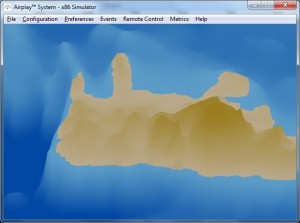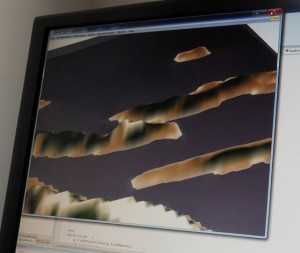Meet Redis
So simple it has got to be powerful! “Redis is an open source, advanced key-value store.” It likes Node and C++. It’s fast. How fast? 100k+ sets or gets per second fast. We’ll take it. So far all our data was in binary and text files, which are slow and pain to access, modify and share. So, we chunk the data, compress it, hash it, store it. As it turns out, half gig binary map was reduced to 40MB compressed memory data. Great. Now we need to get that data to Airplay somehow. Hiredis was up to the task of being portable. Replacing couple of network system calls and few string format characters, our game started happily reading data directly from db. This is just temporary, of course. Since Redis knows no fear, so it knows no security concepts either. We will have proper server application layer in Node later on, but right now we are just too eager to see our world again. We need 3d meshes.





